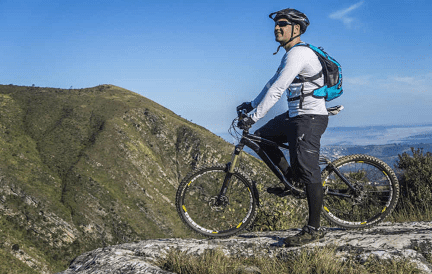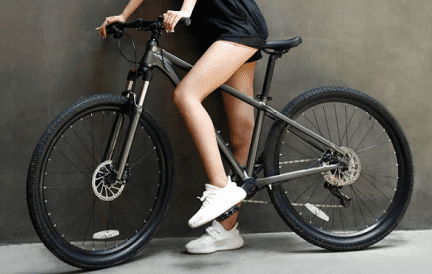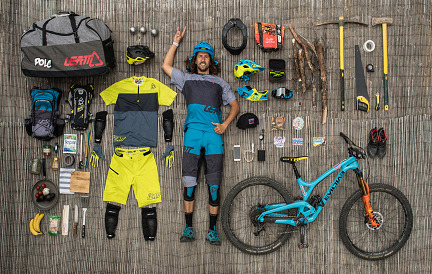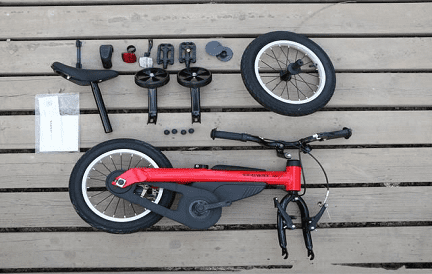A single speed hub bicycle is a bicycle with only one gear ratio. Should You Purchase a Single speed Mtb hub? Yes, and read on to find out why: what they are, their benefits, and how to ride them.
- Part 1: Is a Single Speed Hub Inexpensive or Costly
- Part 2: Advantages of a Single Speed Hub
- Part 3: Do You Need a Single Speed Wheelset
- Part 4: Singlespeed Hub Types and Usage
- Part 5: Fixed Gear or Single Speed
- Part 6: Drivetrain Adjustment
- Part 7: The Drawbacks of Riding Single Speed Bikes
- Part 8: How do You Make a Multi-speed Bike into a Single-speed Bike
- Part 9: Tips for Riding a Single Speed Bike
- Part 10: Conclusion
Part 1: Is a Single Speed Hub Inexpensive or Costly
A single-speed Mtb hub is an excellent addition to any bicycle. It will make it easier for you to enter and exit traffic. It can also reduce the strain on your legs, making cycling more comfortable. So, how much does a single-speed Mtb hub cost?
For most bikes, a single-speed bike hub costs between $50 and $200. You can also buy these as add-ons to your existing bike. That would be a good option if you already own one. These cost between $25 and $75. The cost varies depending on the brand, type of hub, and where you buy it. Some hubs, for example, have steel spokes, while others have aluminum or titanium spokes. Steel spokes are generally less expensive than other types because they are less durable and rust more easily over time. Some brands provide limited lifetime warranties on their hubs. It means that if something breaks down or wears out, they will replace it at no additional cost!
There are also various types of hubs that come in a variety of sizes and weights. These parameters may influence their price and how much they weigh when riding your bicycle.
Part 2: Advantages of a Single Speed Hub
The primary advantage of a single-speed rear hub is increased wheel strength. A single-speed wheelset can be built stronger than a traditional rear wheel. It’s the result of using wider spoke spacing and a more symmetrical hub. They also look cool and demonstrate your dedication to the single-speed cause.
The benefits of using a single-speed hub:
- Lightweight
- Easy to maintain
- Blazingly fast and consistent speed
- Lower crank resistance to aid in uphill climbing and acceleration
Because your feet are not fixed to the pedals when coasting downhill or riding through turns on rough terrain, you have better braking power and control, as well as a more natural body position for descending and cornering. 6. You are the master of your instrument (a bike). As we’ll see further down, flip-flop hubs can also provide flexibility. To those who want to try fixed gear riding without committing to it full-time, that’s good news.
What’s more, the lack of derailleurs and shifters results in a lighter, simpler bike that requires less maintenance. There are no adjustments, no cables coming loose or snapping, and because there is only one gear, there is less chance of chain slippage or dropping off the chainrings (the front cog). This results in a much more reliable ride that requires far less time for maintenance.
Part 3: Do You Need a Single Speed wheelset
No, it does not. If you’re on a tight budget or only interested in function, simply convert to single speed on the cheap and revel in your newfound freedom. Most cyclists will be fine with a standard geared cassette hub as long as they take the time to properly set their chain line and keep their chain tensioned and lubed.
We’ll go over the various types of hubs used in single-speed wheelsets below, but if you know what kind you’re looking for, skip ahead to the wheelset section.
Part 4: Singlespeed Hub Types and Usage
Flip Flop Hub
Flip-Flop Hubs (Fixed/Free) Flip-flop hubs, also known as “fixed or freehubs,” have threaded holes on both sides, one for a track cog and the other for a standard single-speed freewheel. If you don’t have disk brakes and want to try a fixed gear bike, a flip-flop single-speed hub allows you to switch back and forth while the fixie thing doesn’t work out, allowing you to quickly change between “fixed and free” by manually reversing the rear wheel. They are the most versatile single-speed wheelset configurations available, but they are useless if you use disc brakes.
According to the legend, “the usual way to use a flip-flop hub is to have a fixed gear on one side and a single-speed freewheel on the other.” “Because the freewheel sprocket is larger than the fixed sprocket, it provides a lower gear.” This allows you to climb for longer periods of time at a lower gear ratio than the fixed gear allows. You can also coast on steep descents by using a larger freewheel gear. Though they are much less common nowadays, some older BMX hubs were also known as “flip-flop hubs.” Instead of being threaded for track cogs, they were designed to fit a 14T BMX freewheel. They can be found with track threading on both sides, but they are not as common as they once were.
Because of the variety of applications for these hubs, when purchasing a flip-flop hub, make sure that the hub spacing is correct for your frame. However, keep in mind that most bolt-on hubs can be re-paced to fit properly in your frame.
Threaded (Freewheel) Single Speed Hubs
Threaded (Freewheel) Single Speed Hubs
Single-speed threaded hubs, which are popular on higher-end non-fixed road bikes and single-speed mountain bike hubs with disk brakes, allow a single freewheel to be threaded onto the hub. This is probably the most elegant and potentially the most expensive route for building a single-speed hub wheelset and perfecting your non-fixed single-speed drivetrain. Commonly known as “track hubs” (without the flipping and flopping), this is probably the most elegant and potentially the most expensive route for building a single-speed wheelset and perfecting your non-fixed single-speed drivetrain. However, given the number of options available on the market, it is clearly popular.
Threaded Disc Single Speed Hubs
Mountain bikers can use 135mm-spaced Disc single-speed hubs, which are much easier to install in a single-speed frame. Before single-speed cassette hubs became common, these were much more popular. Consider the used market if you’re looking for a threaded disc Single speed mountain bike hub for your single-speed wheelset.
Disc single-speed cassette hubs are found on high-end dirt jumpers, the best pump track bikes, cross country, and all-mountain single-speed bikes, and feature a 6-bolt disc flange to attach a rotor. More importantly, they have a narrow freehub body or micro-drive system that is otherwise standard. These allow you to easily and cheaply swap out cogs for different gear ratios depending on the course you’re racing on or just figuring out your ideal gear ratio. It’s a great option for those who aren’t sure about their gear ratio but are certain they want a single-speed specific wheelset.
Find Your Perfect Single-speed Mountain Bike Hub
There are a few factors to consider when selecting the best gear ratio for your single-speed MTB hub setup. First and foremost, what kind of riding will you be doing? How hilly is the terrain where you ride? What is your current level of fitness? And what kind of rider are you? Do you prefer a slower cadence and fewer rpm, or do you prefer a higher cadence and more rpm?
The great thing about single-speeding is that you can use any gear ratio you want, so if the stock gearing on the bike isn’t quite right for you, you can easily change it. Simply multiply the two numbers to find out how many teeth are on your rear cog and chainring. For instance, if you have an 18T rear cog and a 32T chainring, you will have 576 gear inches (18 x 32).
Easy usage
The one-speed bike is the most basic of all bicycles, but it is also the most useful for some riders. While multi-gear bikes are suitable in a variety of environments, from flat city streets to steep mountains, they have a significant disadvantage: they are more complicated.
Examine your bike’s rear hub (the part that the wheel spins around). The axle that runs through the center of your wheel is on one side, and three or more small cogs are on the other. (Some multi-gear hubs, on the other hand, use an internal gear system.) When you shift, these cogs work with a derailleur to change gears. A single-speed Mtb hub contains only one cog. It could have a flip-flop hub, which means it can be used with two different gears depending on how the wheel is mounted in your frame. Most fixed-gear and single-speed bikes make use of this by mounting a freewheel on one side and a fixed cog on the other.

Part 5: Fixed Gear or Single Speed
There are two types of bikes in the one-speed revolution: single speeds and fixed gears. They are not the same thing, despite their many similarities.
A fixed-gear bike differs in that it does not allow coasting; when the bike is rolling, the pedals turn, similar to a child’s tricycle. A fixed gear is the best option for getting the most out of the one-speed experience if you ride mostly on the pavement. A fixed-gear bike gives you control and a sense of oneness with the bike that a freewheeling bike does not.
Although fixed gear is not appropriate in all situations. A fixed gear is not suitable for steep terrain and, more importantly, is not suitable for technical mountain biking. You don’t have to choose between fixed and freewheel once and for all. Because the same bike can be both if you use a reversible “flip-flop” hub. Many cyclists who want to simplify their lives consider switching to a single-speed freewheel as a way to “test the waters,” hoping that if they like it, they will later convert to fixed gear.
In my opinion, this is the wrong way to go about it.
I STRONGLY advise beginning with fixed gear. If it proves to be a problem, you can easily convert to freewheel later… but my bet is you won’t want to if you give the fixed-gear a good try (it usually takes a couple of weeks of regular riding to get past the strangeness, but it’s quite addictive!)
Most people who set up their bikes with a fixed/free flip-flop end up using the fixed gear side almost exclusively. The freewheel option is most useful when you’ve taken a longer-than-usual ride and need to get home despite being completely exhausted.
Part 6: Drivetrain Adjustment
Even with the chain running at a significant angle, old English Derailer bikes can function fairly well. But this should not be done with a single-speed hub setup. It is critical to get the chain line just right.
Installing the hub on the bike with no chain allows you to check the chain line. By putting your head just in front of the chain wheel, you can see back to the rear hub and see if the chain wheel lines up exactly with the rear sprocket. If it doesn’t, rearrange the spacers or replace the bottom bracket axle as needed. Holding a yardstick or other straightedge against the side of the chain wheel and reaching back to the sprockets is another option.
On a bicycle with vertical dropouts and a chain tensioner, the chain is adjusted. The least amount of slack possible without binding by “walking” the rear wheel forward or back in the dropouts. Chainwheel selection can have an impact on their longevity. They can also be centered to maintain the same chain slack as the cranks turn.
Part 7: The Drawbacks of Riding Single Speed Bikes
Riding a single-speed bike has numerous advantages. For many, the simplicity of a single-speed is the most appealing feature, but the ability to focus on riding is a close second. With that said, you may be wondering if riding a single speed has any drawbacks. Riding a single-speed bike has a number of disadvantages. Most people who ride an SS bike don’t let these disadvantages stop them, but they can be significant deterrents for some. The inability to switch gears is the first and most obvious disadvantage. If you live in a hilly area, you will be limited to one gear ratio and will be unable to shift when necessary.
Another disadvantage is that when going downhill or fast on flats, your legs will have to spin faster than usual. This isn’t necessarily a bad thing, but it can be difficult to adjust to.
Finally, most single-speed bikes come standard with only a front brake, which isn’t always enough stopping power for some people. If you’re thinking about buying an SS bike, I’d recommend getting one with front and rear brakes, or swapping out your front brake for a rear brake.
Part 8: How do You Make a Multi-speed Bike Into a Single-speed Bike
Converting a multi-speed bike to a single-speed bike is a difficult task that anyone who is willing to put in the time and effort can complete. A mountain bike is easier to convert into a single-speed Mtb bike than a road bike. The conversion of multi-speed road bikes to single-speed bikes is not as common as the conversion of mountain bikes. However, if you want to convert your road bike to a single speed, you must follow the instructions below.
Part 9: Tips for Riding a Single Speed Bike
Riding a single-speed bike on trails can be frustrating, and you may find yourself pedaling more than riding. Here are some pointers to help you develop the skills and techniques needed to ride trails on your single-speed bike more efficiently.
- Do not use a front chainring that is too large or a rear cog that is too small.
- For trail riding, keep the front chainring between 32 and 36 teeth and the rear cassette cog between 17 and 19 teeth. Choose a gear ratio that is comfortable for you when climbing and coasting downhill, but not too fast or too slow. You should also maintain a high cadence (pedal fast) at all times.
- When riding in technical terrain, keep your weight centered over the bike.
- When going uphill or in technical terrain, do not lean back; instead, stay centered over the bike to avoid stalling, stuttering, or losing balance due to difficulty changing gears while pedaling uphill in technical terrain. While seated, keep your body weight centered over the bike so that there is no weight on the pedals, and maintain pressure on both bearings (seat tube and bottom bracket). Learn how to stand up on the pedals to gain speed while keeping your body weight balanced over the bike while riding technical terrain, especially when climbing uphill.
Rough Riding with a Single Speed Hub
With this guide to the best single-speed hubs, you can increase your speed and performance. Many people enjoy riding their bikes on the bike trail. However, if you’re not getting the most out of your bike, it can become a chore for some. So, how can you make the most of your ride? There are numerous changes that can be beneficial to enhance your cycling experience. The most significant change you can make is to buy and install a new single-speed hub.
A single-speed hub is an essential part of any bicycle wheel. It allows you to add gears to your bike and change the speed at which it accelerates. It’s also extremely useful for maintaining control on rough terrain. It is critical that you purchase and install the proper single-speed hub on your bike, as it may damage other components or cause accidents while in use.
Part 10: Conclusion
By utilizing gravitational force, a single-speed Mtb hub is simple to use. Single-speed hubs don’t have any moving parts or gear that touches the chain, so you don’t have to worry about damaging your transfer gear. This feature leads us to another benefit of single-speed mountain bike hubs: they require little maintenance. Because single-speed Mtb hubs do not have any delicate parts, they are more durable than bike gears.









